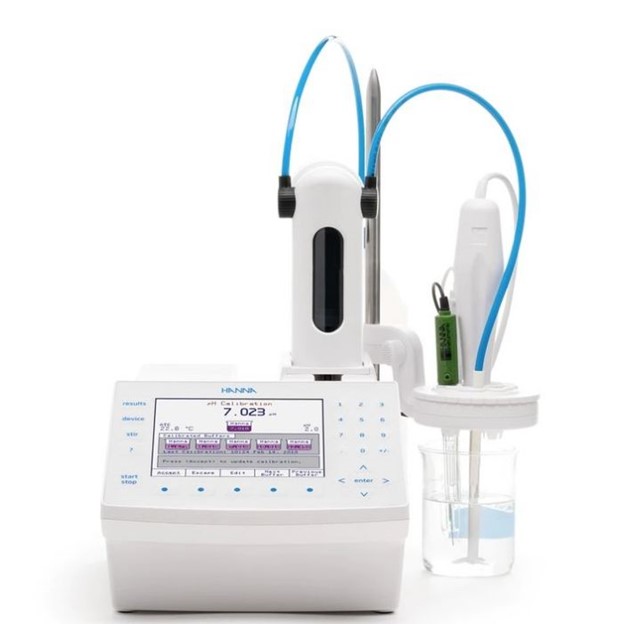The quality of water plays a crucial role in the brewing process, impacting various aspects of beer production, including flavor, clarity, and stability. One essential water parameter that brewers need to consider is alkalinity.
Alkalinity refers to the water’s ability to resist changes in pH when acids are added. Understanding and monitoring alkalinity in brewery water is vital to ensure consistent and high-quality beer production.
One of the most important components for beer production is water. It represents the largest share in beer (85-95%). Its chemical makeup, including its alkalinity, can greatly influence the taste, appearance, and stability of the final product.
Understanding Alkalinity and its Impact on Brewery Water
Alkalinity refers to the water’s ability to resist changes in pH. It is primarily caused by the presence of bicarbonate, carbonate, and hydroxide ions. In brewing, alkalinity can have a significant impact on the mash pH, which in turn affects enzymatic activity and the extraction of sugars from grains. A high alkalinity can lead to off-flavors, haze, and reduced fermentation efficiency. Therefore, understanding and managing alkalinity is essential for brewers who aim to consistently produce high-quality and flavorful beers.
How Alkalinity Affects the pH of Brewery Water
Alkalinity can act as a buffer, regulating the pH of the brewing water. If the alkalinity is too high, it can push the pH of the mash into undesirable ranges, resulting in poor enzyme activity and inefficient sugar extraction. On the other hand, a low alkalinity can lead to a mash pH that is too acidic, affecting the flavor profile and stability of the beer.
Alkalinity and its Influence on Beer Flavor and Stability
Alkalinity not only affects the pH, but it also leaves its mark on the flavor and stability of beer. Certain beer styles, such as those with a soft and smooth profile, require a low alkalinity to maintain their desired characteristics. Additionally, alkalinity can impact the beer’s stability, as high levels of alkalinity can lead to precipitation of minerals and haze formation.
Consistency and Quality Control in Brewing
Monitoring alkalinity is a vital component of achieving reliable and consistent results. By measuring and controlling alkalinity, brewers can maintain a consistent pH throughout the brewing process, ensuring that each batch of beer meets the desired quality standards. Scaling and deposits in brewing equipment can be a nightmare for brewers. These pesky mineral build-ups not only affect the efficiency of heat transfer but can also result in costly maintenance and downtime. Monitoring alkalinity can help prevent scaling, as it allows brewers to adjust the water chemistry and keep those unwanted deposits at bay.
Maintaining Optimal Enzyme Activity in the Mash
Enzyme activity is a crucial step in converting starches into fermentable sugars during mashing. Alkalinity plays a significant role in maintaining optimal enzymatic activity, ensuring efficient sugar extraction and a successful fermentation process. By monitoring alkalinity levels, brewers can make informed decisions about adjustments in water chemistry, allowing their enzymes to work and create the perfect conditions.
Understanding Alkalinity Units and Measurements
Alkalinity is often expressed in milligrams per liter (mg/L) of calcium carbonate (CaCO3) equivalent. This unit measures the amount of acid needed to neutralize the alkalinity in your water. It is recommended to maintain the alkalinity at a value of less than 100 ppm. The higher the alkalinity, the more acid you’ll need to bring it down to a desirable level.
Adjusting Alkalinity through Water Treatment
Water treatment is procedure that can help. Depending on your brewery’s needs and the desired beer style, you can adjust alkalinity levels by adding acids or salts to your water. Each style has its own unique pH and alkalinity requirements. Understanding how alkalinity and pH interact will help you achieve the ideal flavor profile.
Measuring Alkalinity in Brewery
Titration Method for Alkalinity Measurement
Water treatment is procedure that can help. Depending on your brewery’s needs and the desired beer style, you can adjust alkalinity levels by adding acids or salts to your water. Each style has its own unique pH and alkalinity requirements. Understanding how alkalinity and pH interact will help you achieve the ideal flavor profile.
HI931
Automatic Potentiometric Titrator
The HI931 Automatic Titrator is the answer to your dedicated titration needs. Fully customizable, the HI931 delivers accurate results and intuitive user experience, all in a compact package. Titrate for a variety of measurements at the push of a button including acids, bases, redox, and selective ions. No additional programming upgrades to purchase. The only things you need to start using the HI931 are a sensor and titrant.
- Small footprint so you can fully optimize your benchtop.
- Unmatched 40,000-step dosing pump for small volumes of titrant to help you achieve a very precise endpoint for greater consistency.
- Flexibility to store up to 100 methods.
Colorimetric Methods for Quick Alkalinity Assesment
For those who like things quick and easy, colorimetric methods are here to save the day. Colorimetric methods involve using a colorimeter to determine concentration of a chemical compound in a solution by measuring spectral absorbance of the compound at a particular wavelength. A color is formed during the reaction of a detection chemical with the target substance.
HI801
Spectrophotometer Iris
The HI801 Iris is a sleek and intuitive spectrophotometer that allows for measurement of all wavelengths of visible light.
Customize your methods, take a wide range of measurements, and feel confident in your testing accuracy with iris.
- Iris features precise wavelength selection between 340 nm to 900 nm for complete method compliance and accuracy that is necessary in industries like professional laboratories, water treatment facilities, wineries, and more.
- Results are consistent and accurate regardless of throughput with the high quality and uniquely designed optics system.
- Customization options include multiple cuvette shapes and sizes, custom calibration curves, and methods.
Have questions?
Contact a Hanna Technical Specialist at info@hannaservice.eu or using our contact form.
AUTHOR:
Tajana Mokrović, mag.nutr.


With Great Products
Come Great Results








